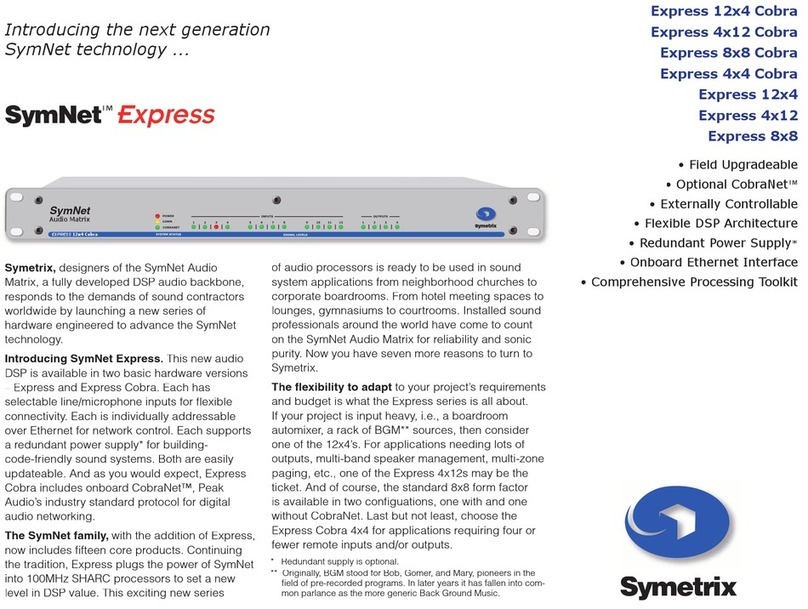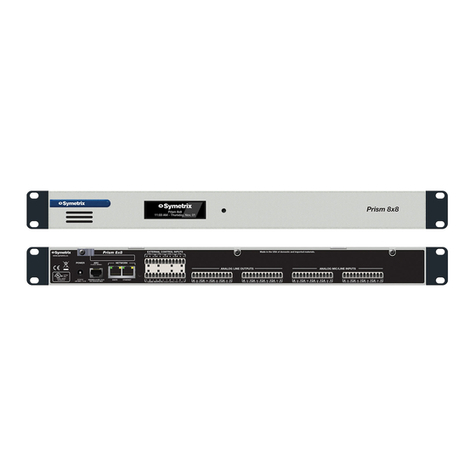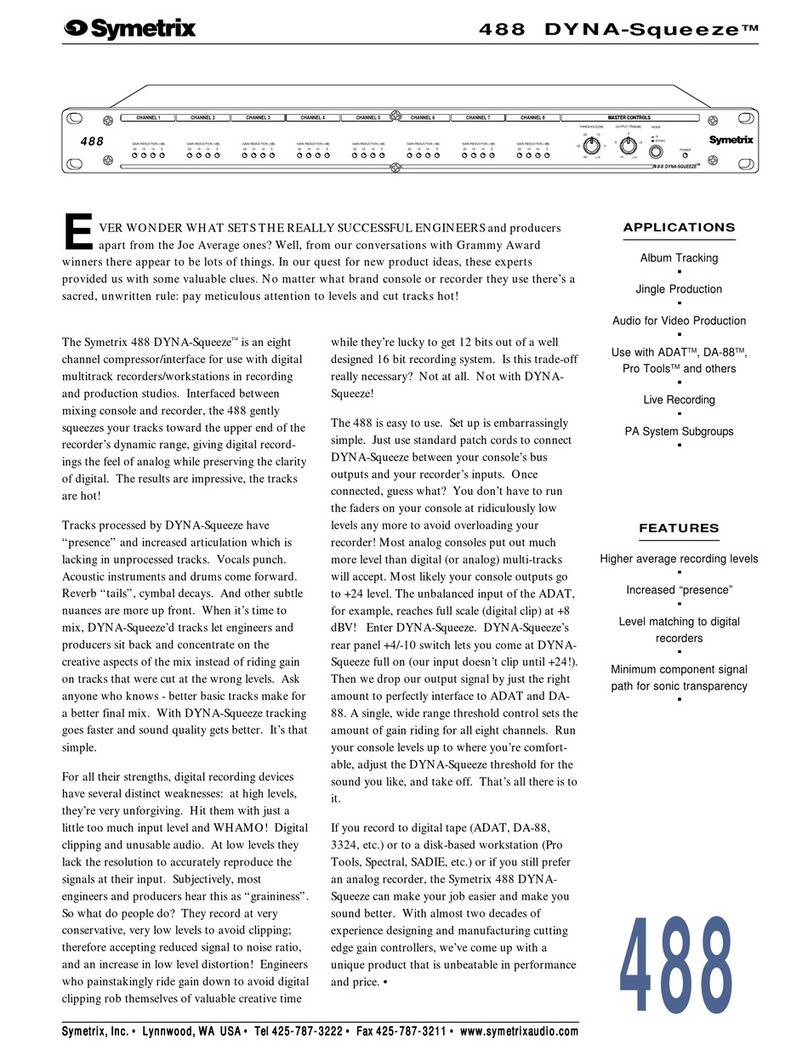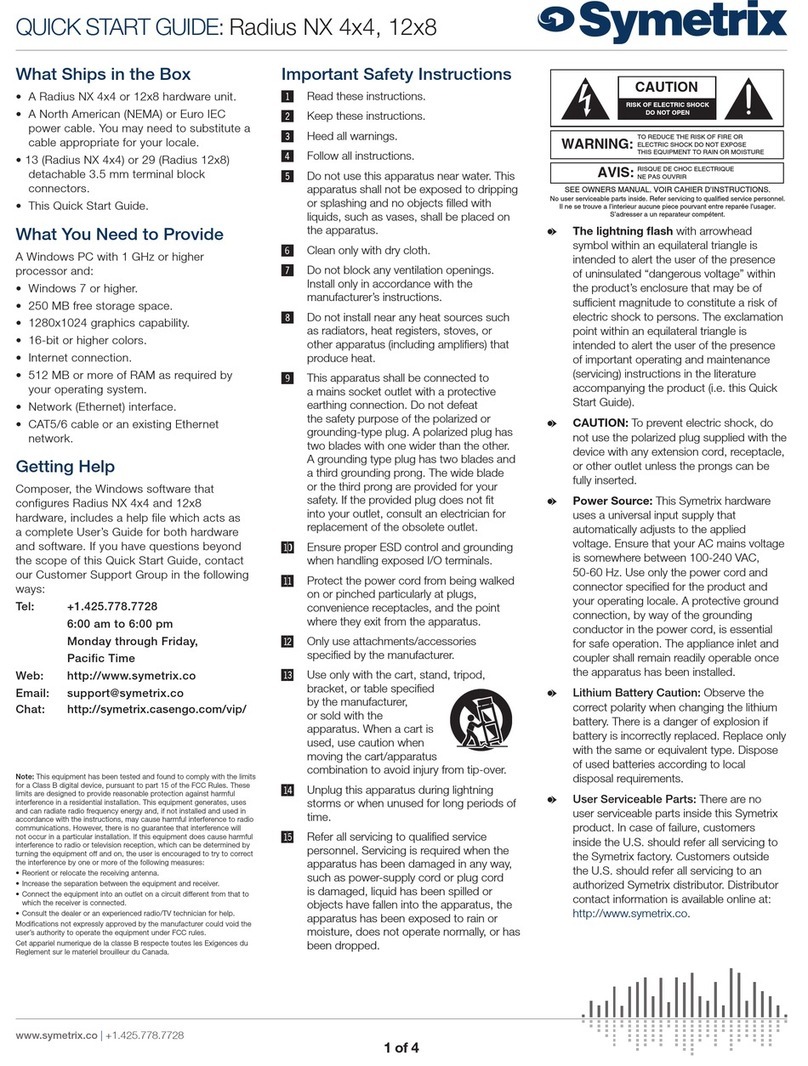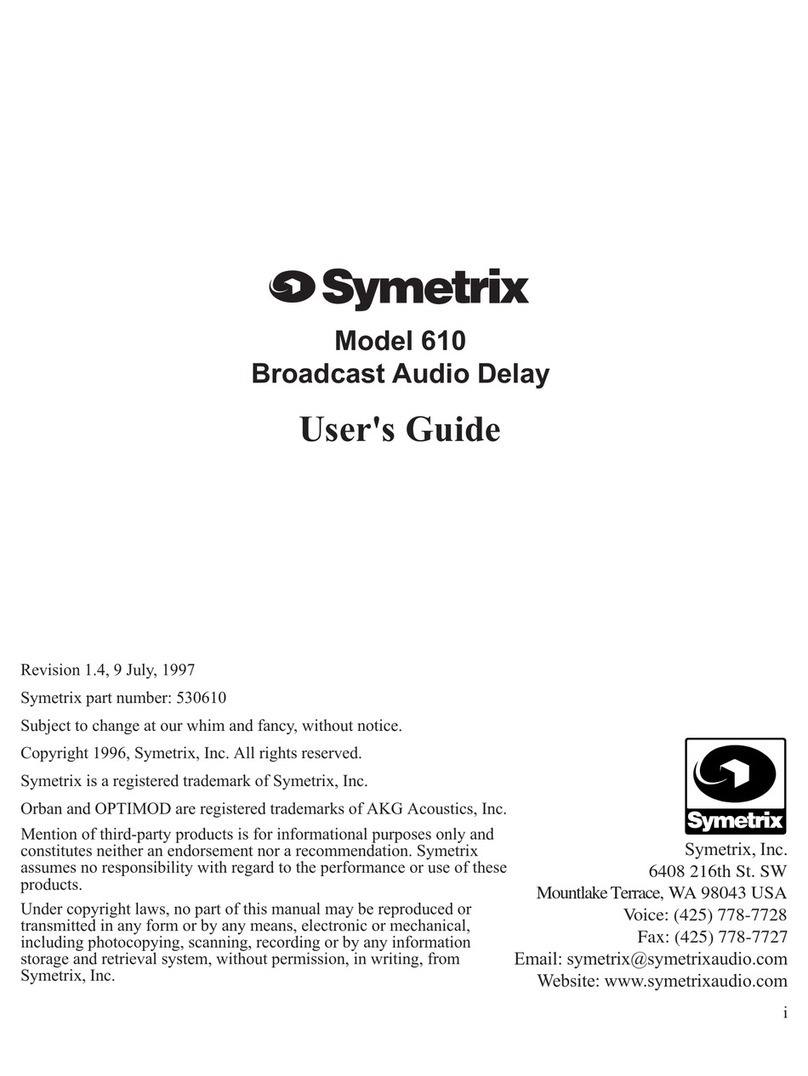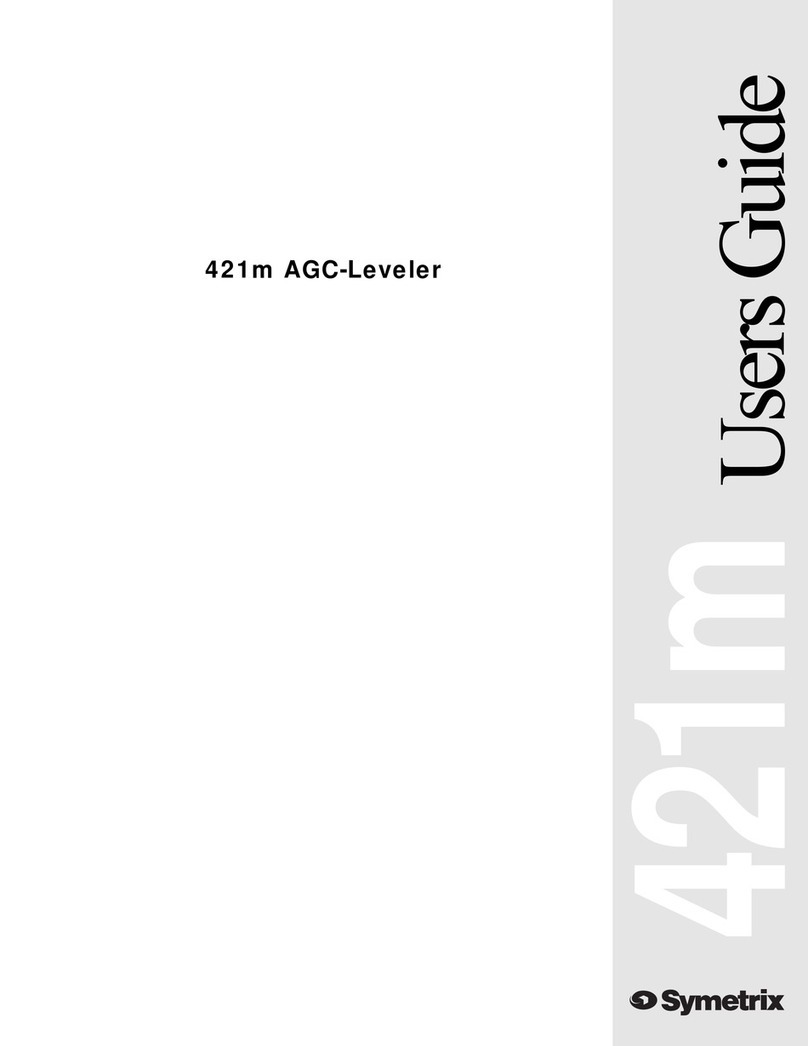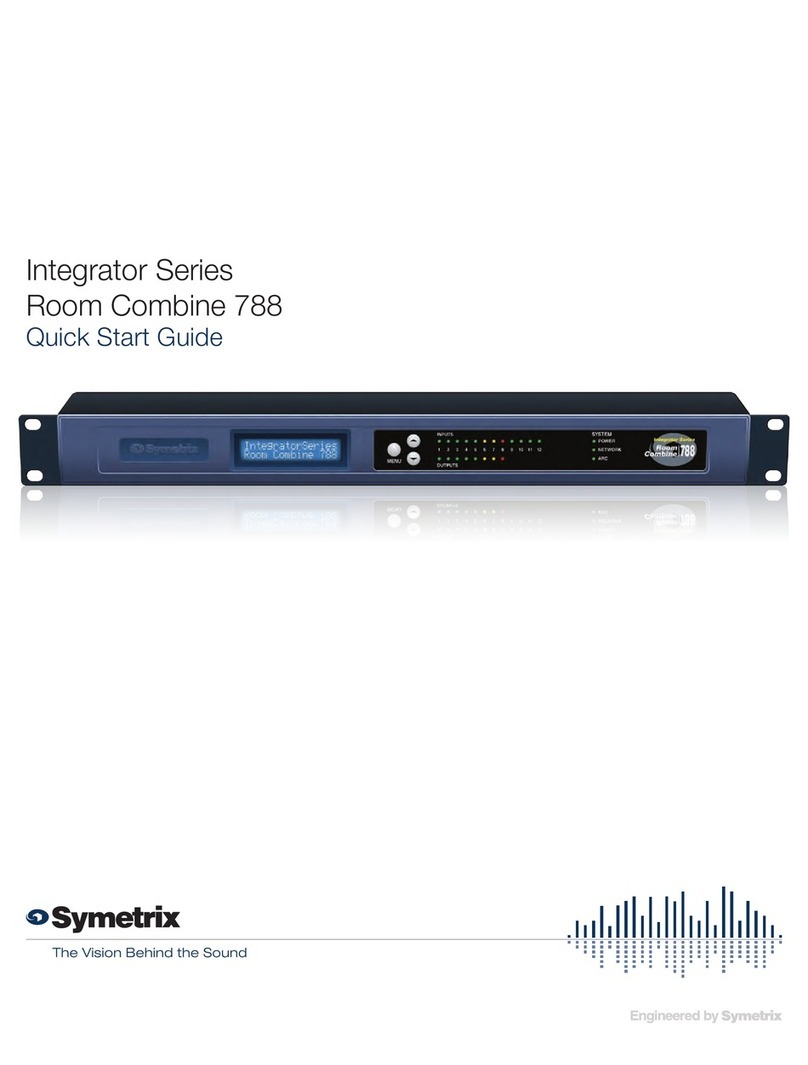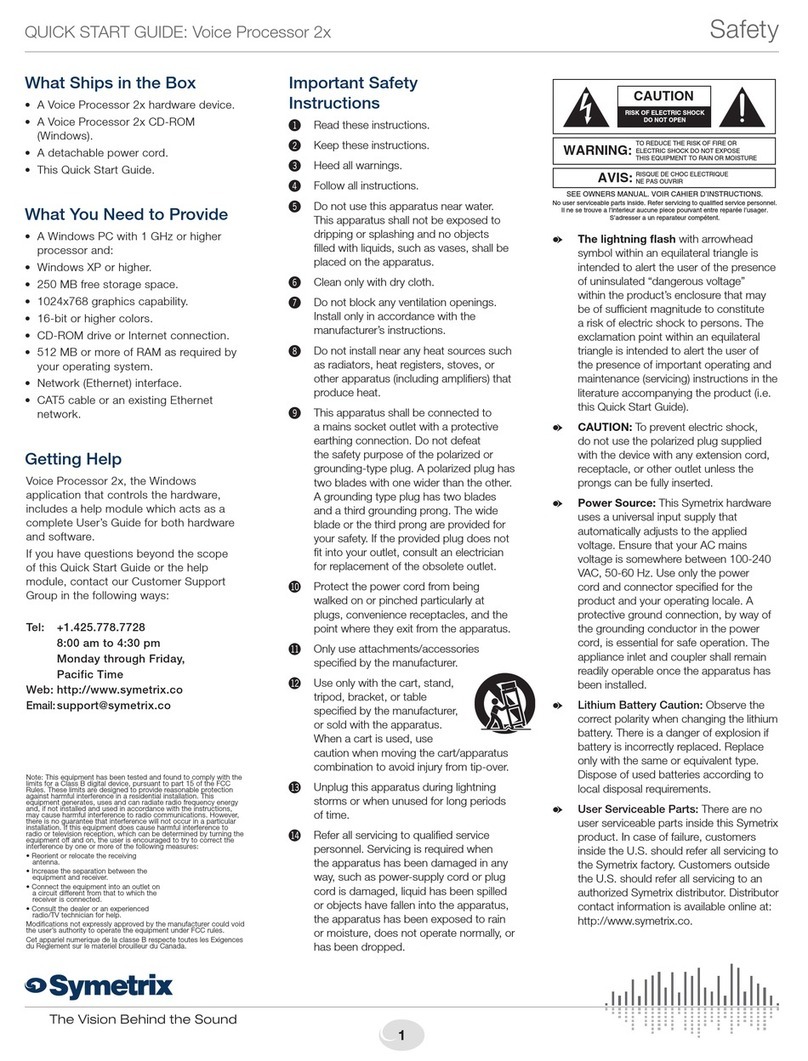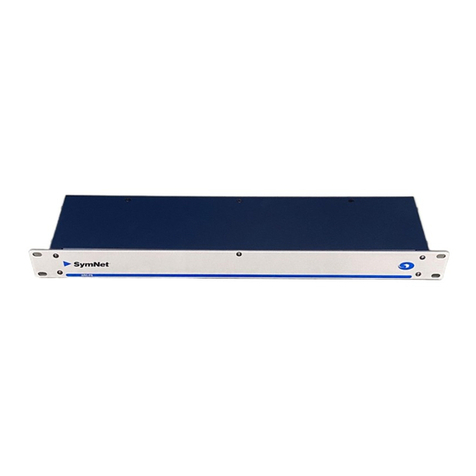
1
531E 532E
/
IntroductionChapter 1
Thank you for choosing a Symetrix Graphic
Equalizer. We think you will be glad that you
made this choice because, out of the sea of
graphic eqs that you might have purchased, the
531E and 532E are the only affordable
equalizers that offer truly professional perfor-
mance.
How did we do this? First, because our design
team believes that no one should have to settle
for good enough, they threw out the conven-
tional design ideas and started from scratch.
The result: a highly advanced filter topology
that delivers extremely low distortion and
noise, even at very high signal levels.
Second, our state-of-the-art facility gives us
the ability to build quickly, consistently, and in
high volume, allowing us to keep our prices
low. In addition, the 531E and 532E make
extensive use of surface-mount components.
This allows us to cram more circuitry onto a
smaller circuit board, further reducing costs.
In fact, the 531E and 532E are a purists dream
- audiophile sound quality, uncluttered control
surface, and rugged reliability in one package.
They offer thirty-one filter bands per channel
on ISO 1/3rd octave centers. Through the use
of a global range switch, each band delivers
either 6dB or 12dB of cut or boost. The
grounded center detent position on each band
serves as an on/off switch that completely
removes that band from the audio signal path.
In addition, they sport 12dB per octave High
Cut and Low Cut filters. Each has a sweepable
cutoff frequency and a control range that
extends well into the sub/ultrasonic.
Of course, the controls and features are
secondary to the all important question: How
does it sound? Consider the following facts.
Our proprietary filter technology delivers the
lowest noise floor of any graphic equalizer in
the world, ultra-accurate summing, and
minimal ringing and phase shift. The total
harmonic distortion is less than 0.002%.
Translation: the 531E and 532E are clean,
clear, and musical-sounding.
To ensure the highest level of year-after-year
performance, we build the 531E and 532E to
touring standards. Double sided, glass epoxy
circuit boards, metal shaft, plastic film slide
potentiometers, gold-plated XLR connectors,
and a heavy duty all-steel chassis deliver
rugged reliability. You dont have to treat these
with kid gloves.
The details are worth noting, too. High-contrast
front panel graphics make your control settings
easy to read even in a darkened concert hall.
Servo-balanced outputs remove all DC offset
from the 531E or 532Es output. This elimi-
nates the need for DC blocking capacitors in
the signal path while improving noise, distor-
tion, and low-frequency performance. Of
course, the 531E and 532E incorporate a high-
current, internal power supply with an IEC-
type detachable power cord. No wall warts
here!
We recommend that you read this manual
cover-to-cover. Youll find the answers to most
of your questions inside. However, if you are
in a hurry, go directly to the Fast First-Time
Setup section. It will get you started quickly.
Should you have any comments or questions,
please do not hesitate to contact us at the
numbers/addresses below. Your calls are
always welcome.
Phone 425 778 7728
Fax 425 778 7727
EQUALIZER
GRAPHIC
+12
+6
20K16K12.5K10K
0
-6
-12
16K 20K10K 12.5K
8K6.3K5K4K3.15K2K 2.5K1.25K800 1K630500400315 1.6K
6.3K 8K4K 5K3.15K2K 2.5K1.25K800 1K500315 400 630 1.6K
250160 20010063 80 1254025 31.520
+12
+6
50
200160 25010063 80 125
18K
HIGH CUT
±12dB
BYPASS
42K
3K 65K
MODE 0
4025 31.5
-6
-12
20 50
22
LOW CUT
50
U
INPUT
5K
115
6 260
8
∞
- +15
CLIP
E
10dB
0dB
POWER
-20dB
LEVEL
531
CUT FILTERS
+6
+3
-3
-6
+6
+3
±6dB
-3
-6
+12
0
16K10K 12.5K 20K
-12
+12
16K12.5K10K 20K
-12
16K12.5K10K 20K
0
8K5K4K 6.3K3.15K2K 2.5K1.25K800 1K500400315 630 1.6K
4K 8K6.3K5K3.15K2K 2.5K
4K 8K6.3K5K3.15K2K 2.5K
1.25K1K800500400315 630
1.25K1K800500400315 630
1.6K
1.6K
25020016010063 80 1254025 31.520
0
CH1
18K
HIGH CUT
MODE
50
250160 20010063 80 125
25020016010063 80 125
4025 31.5
BYPASS
±12dB
3K 65K
18K
HIGH CUT CH2
20
4025 31.5
±12dB
BYPASS
42K
3K 65K
MODE
20
0
50
50
42K
22 50
LOW CUT
U
INPUT
CLIP
CH1 LEVEL
115
6 260
8
∞
+15
LOW CUT
U
INPUT
0dB
-20dB
E
CH2 LEVEL
115 5K
6 260
8
∞
+15
10dB
-20dB
0dB
POWER
22 50
CLIP
EQUALIZER
GRAPHIC
532
5K
10dB
CH1 CUT FILTERS
CH2 CUT FILTERS
+6
-6
+6
-6
±6dB
±6dB
